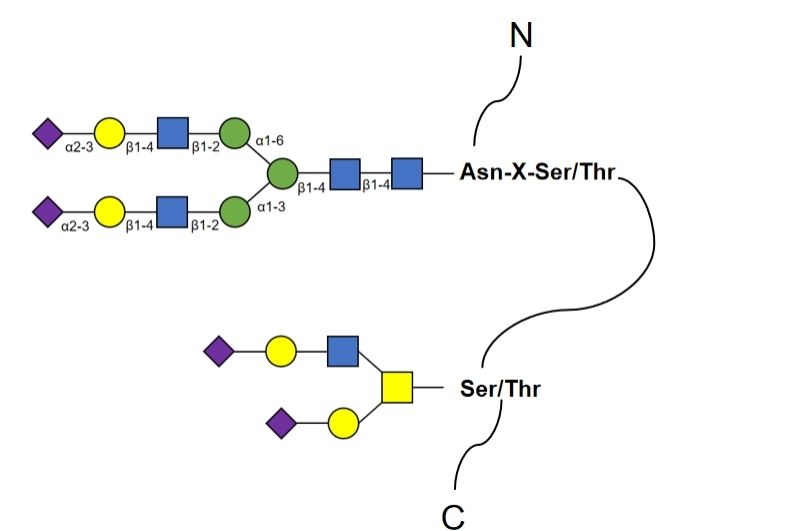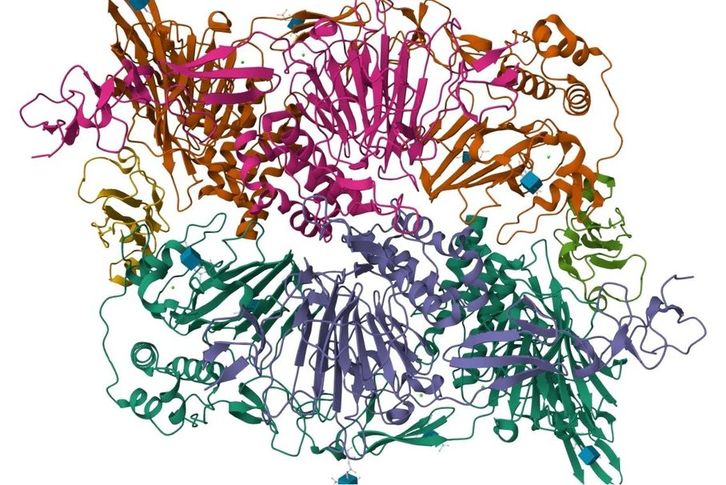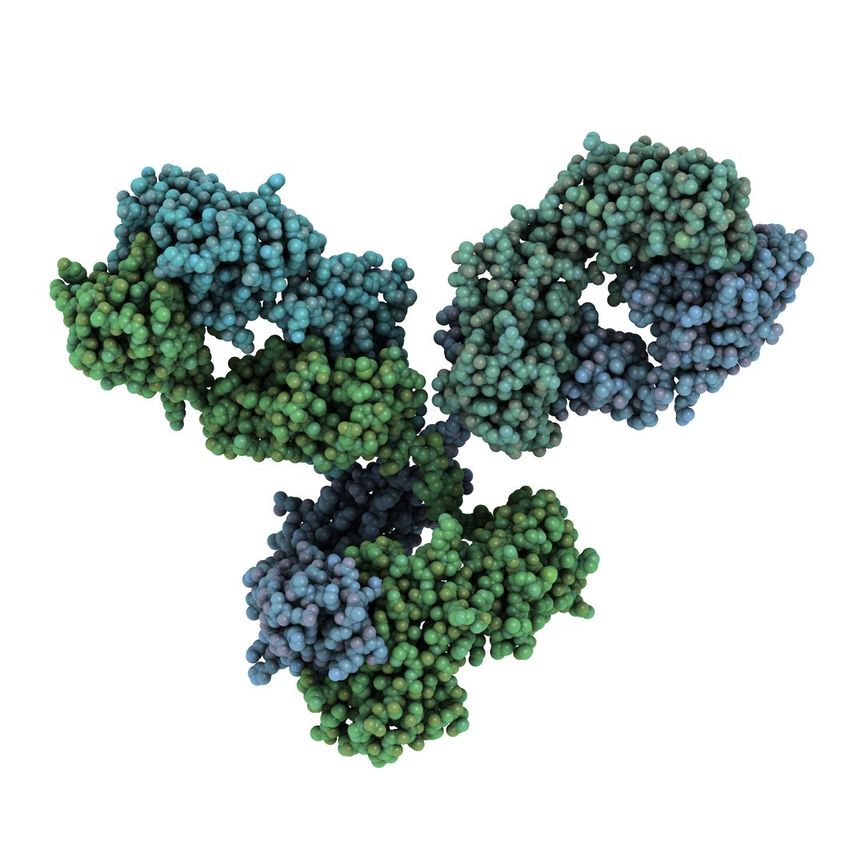Glycoinformatics-assisted Neuronal Diseases Glycomics Analysis Service
Decoding Neuronal Diseases Through Advanced Glycoinformatics and Glycomics Analysis!
At CD BioGlyco, we offer comprehensive
Glycoinformatics-assisted Glycomics Analysis Services to help researchers elucidate complex glycan structures and functions. Within this service, our specialized
Glycoinformatics-assisted Disease Glycomics Analysis Services focus on identifying disease-specific glycan biomarkers. Narrowing the scope further, our glycoinformatics-assisted neuronal diseases glycomics analysis service focuses on complex glycomic changes associated with neuronal diseases.
Our glycoinformatics-assisted neuronal diseases glycomics analysis service provides cutting-edge tools and methods to explore glycan changes in the context of neuronal diseases. Using sophisticated computational models and high-throughput analytical techniques, we help researchers uncover glycan mechanisms that may cause or prevent neuronal degeneration. Such detailed insights help enhance the understanding of disease pathogenesis at the molecular level.

Sample preparation and glycan release
We utilize highly sophisticated protocols that start with meticulous sample preparation to ensure the integrity and quality of neural tissue or cell samples.
We enzymatically or chemically release glycans from glycoproteins, preserving their native structure.
Glycan labeling and enrichment
We typically label the released glycans with fluorophores or other tags.
Enrichment techniques such as solid phase extraction are then used to isolate specific glycan populations.
Mass spectrometry (MS)-based glycomics
We utilize high-resolution MS platforms such as MALDI-TOF MS, LC-MS/MS, and HILIC-MS to characterize glycan structures. This analysis provides detailed information on glycan composition, structure, and abundance.
Glycoproteomic analysis
We combine glycomics with proteomics to identify glycosylation sites on neuronal proteins. This comprehensive glycoproteomic approach reveals specific glycoproteins that undergo glycosylation changes.
Bioinformatics and glycomic tools
We use a proprietary glycoinformatics platform to interpret glycomic data using databases, algorithms, and software tools.
Tools such as in silico glycan structure prediction, glycan pathway analysis, and network biology are used to place glycosylation changes in the context of biological pathways and networks.
Data integration and systems biology
We use systems biology approaches to integrate glycomic data with other omics datasets such as genomics, transcriptomics, and proteomics.
Biostatistical analysis
Advanced statistical tools and machine learning algorithms are used to identify significant glycosylation patterns and potential biomarkers.
Publication Data
Journal: Ageing research reviews
IF: 13.1
Published: 2023
Results: The research centers on protein glycosylation in N- and O-glycoproteins found in brain tissues, examining their roles in both healthy and diseased states. The authors introduced experimental methodologies and glycoinformatics tools for analyzing protein glycosylation. They utilized resources linked to the GlyConnect glycoprotein platform. Additionally, they explored the glycosylation characteristics of human cerebrospinal fluid (CSF), especially those proteins originating from the brain.
 Fig.1 Glycans identified in the brain and CSF. (Costa, et al., 2023)
Fig.1 Glycans identified in the brain and CSF. (Costa, et al., 2023)
Applications
- Glycoinformatics-assisted neuronal diseases glycomics analysis service can be used to deeply analyze the fine structure of sugar chains on the surface of neuronal cell membranes and reveal the changing patterns of sugar chains under different disease states. This structural information helps scientists understand the molecular mechanisms of neuronal diseases.
- Glycoinformatics-assisted neuronal diseases glycomics analysis service can be used to efficiently identify glycosylation sites on neuronal proteins and predict the effects of these glycosylation modifications on protein function.
- Glycoinformatics-assisted neuronal diseases glycomics analysis service can be used to build neuronal disease models that contain specific sugar chain structural changes.
Advantages of Us
- Our services provide insights into the highly complex glycan structures in neuronal diseases, revealing their subtle molecular features. This analytical capability provides us with insights into the key role of glycans in neuronal function, providing unprecedented insights into disease mechanisms.
- Our services help to efficiently identify glycosylation sites on neuronal proteins and predict how these glycan modifications affect protein function and stability.
- Our services help to integrate massive amounts of glycomics data from multiple experimental techniques.
Frequently Asked Questions
- What samples or data do I need to provide to start the analysis service?
- Usually, you need to provide biological samples related to neuronal diseases, such as cell lines, tissue sections, or body fluid samples. These samples should contain sufficient glycan information for analysis. In addition, if you already have preliminary glycomics data or related experimental results, you can also provide them together so that we can better understand your research needs and customize a more accurate analysis plan.
- What types of reports or results will I get after the analysis service is completed?
- After the analysis service is completed, you will receive a detailed analysis report, which includes but is not limited to a detailed analysis of glycan structure, identification of glycosylation sites, analysis of changes in glycan abundance, and construction of a glycan-protein interaction network. We will also provide visual charts and data analysis results to help you intuitively understand the role and mechanism of glycans in neuronal diseases. In addition, we also provide personalized consulting and interpretation services to help you make full use of the analysis results to promote the research process.
At CD BioGlyco, we are committed to advancing the field of glycomics through our state-of-the-art glycoinformatics-assisted neuronal diseases glycomics analysis service. By leveraging our expertise in glycoscience and cutting-edge technologies, we aim to transform research practices, ultimately contributing to a better understanding of neuronal diseases. Please feel free to contact us if you are interested in our glycoinformatics-assisted neuronal diseases glycomics analysis service.
Reference
- Costa, J.; et al. Protein glycosylation and glycoinformatics for novel biomarker discovery in neurodegenerative diseases. Ageing research reviews. 2023, 89: 101991.
For research use only. Not intended for any diagnostic use.
Quick Links
Related Services



 Fig.1 Glycans identified in the brain and CSF. (Costa, et al., 2023)
Fig.1 Glycans identified in the brain and CSF. (Costa, et al., 2023)


